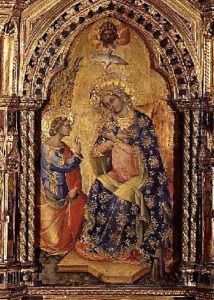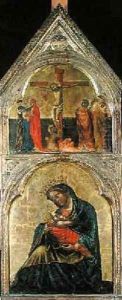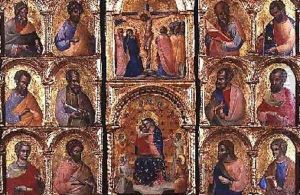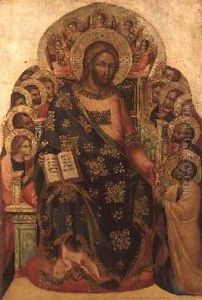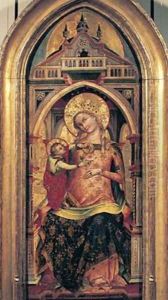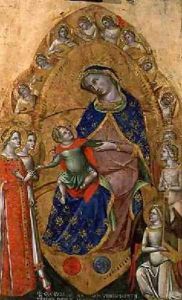Veneziano Lorenzo Paintings
Lorenzo Veneziano, an Italian painter, was a significant figure in the development of the Venetian school of painting during the late 14th and early 15th centuries. His exact birth and death dates are not well-documented, but it is generally believed that he was born around 1370 and died around 1439. He was one of the most important and innovative artists working in Venice before the advent of the Renaissance and his work marks a transitional phase between the Byzantine style and the emerging Renaissance sensibility.
Lorenzo's art is characterized by its vivid colors, attention to detail, and a blend of traditional Byzantine iconography with a growing interest in the naturalistic representation of figures and space. He was likely trained within the Venetian painting tradition, which during his time was still heavily influenced by Byzantine models, as Venice had strong trade and cultural links with Byzantium.
He first appears in historical records with a work dated to 1357, and he continued to be active until about 1379. One of his most notable works is the altarpiece for the high altar of San Lorenzo in Venice (c. 1371), which demonstrates his skill in handling spatial composition and narrative detail. His figures are often elegantly posed and draped in richly patterned fabrics, showing a blend of gothic elegance with a heightened sense of realism.
Lorenzo Veneziano played a pivotal role in introducing the International Gothic style to Venice. This style was characterized by graceful, elongated figures and an ornate and decorative approach to surfaces and backgrounds. He influenced numerous artists in Venice and the Veneto region and helped lay the groundwork for the Venetian Renaissance, which would flourish in the later 15th century with artists such as Giovanni Bellini and Carpaccio.
Despite his importance, many details about Lorenzo's life and career remain obscure, and only a limited number of works have been firmly attributed to him. However, his legacy is seen in the way he combined the grandeur and spirituality of Byzantine art with a growing interest in the natural world and the individual, which would become hallmarks of Renaissance art.
